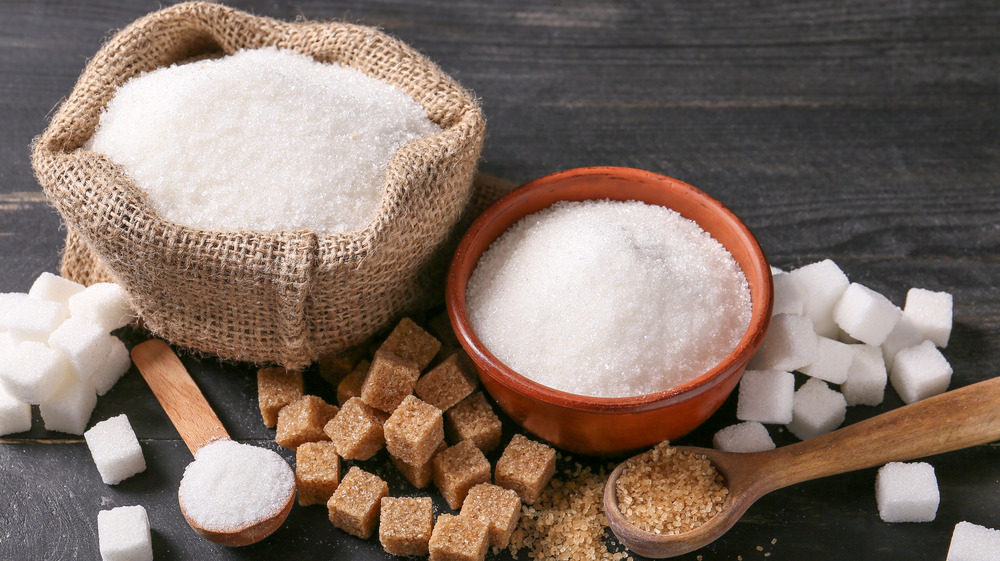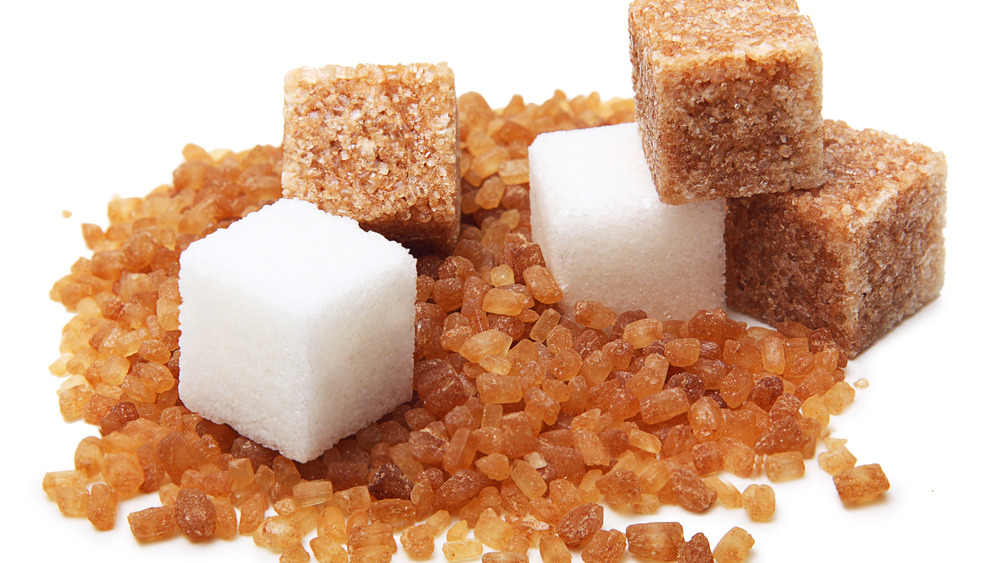What's The Real Difference Between Cane Sugar And White Sugar?
It hasn't always been so easy to sweeten your tea. According to Saveur, in 1840, if you wanted to put some sugar in your tea, you would need to own a pair of sugar nippers, a cast-iron, scissor-like contraption that would cut off a chunk of sugar from your cone-shaped sugar loaf. When you wanted a cup of sweet tea, you would simply place a sugar chunk in your tea, letting the sugar dissolve until your drink reached your desired level of sweetness. The sugar chunk could then be removed and saved for later.
Today, things are much simpler, and, thankfully, nippers are no longer a requirement. What is required, though, is making the decision about which sugar to buy. A simple trip down the baking aisle might be overwhelming if you don't have a gameplan. Luckily, two options: cane sugar and white are so close in their makeup, they may be interchangeable.
Cane sugar and white sugar have some small distinctions
White sugar, or granulated sugar, is a sugar that can be made from sugar cane or sugar beets, and is usually what recipes mean when they call for "sugar." It also has a list of other monikers, including table sugar, common sugar, or regular sugar. White sugar is good for making cocktails and desserts, as it dissolves quickly, much like our self-control around both of those tempting indulgences (via Food52).
According to Cook's Illustrated, natural cane sugar is made from sugar cane, and unlike its polished contemporary, is not as refined. Some find the taste of cane sugar deeper than white sugar, and cane sugar also has larger crystals and is more golden in color.
The main consideration for substituting cane sugar for white sugar is its color, as cane sugar's darker color might make it hard to hit the sweet spot on the color spectrum for some recipes. Cook's Illustrated found that cane sugar might discolor lighter-colored drinks when used as a substitute for white sugar (murky Tom Collins, anyone?) and that cane sugar's darker color might pose a problem detecting color changes while making caramel sauce. The sweet news is that for the most part, white sugar and cane sugar can easily be used as substitutions for each other in recipes. Meaning you don't have to run to the store if you have either in your cabinet, which leaves more time for savoring your sweet creations!

